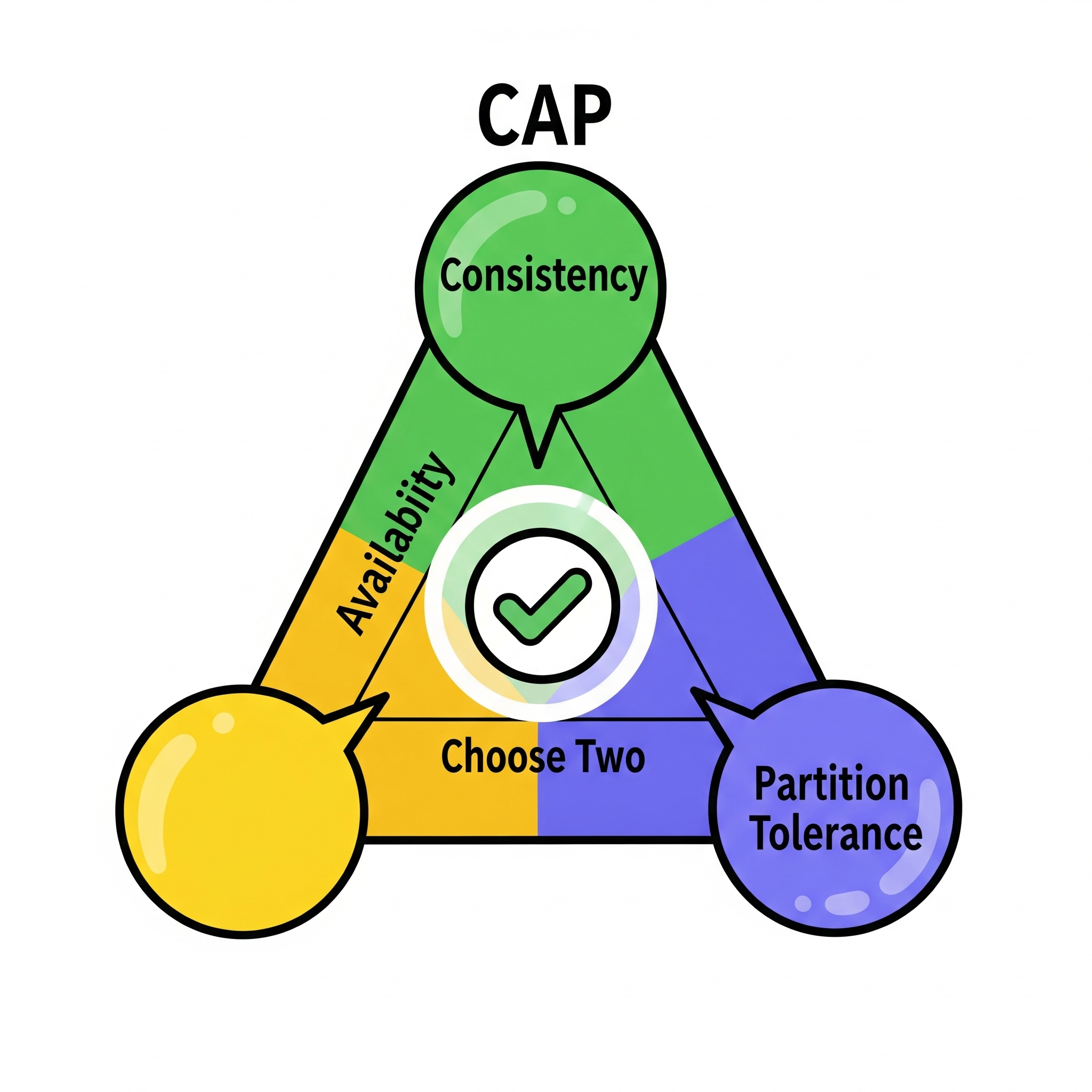Week 1 – CAP Theorem Demystified: What Every Microservice Dev Needs to Know
Author: azar m
June 25, 2025
3 min read
In the world of microservices, making the right architectural decisions can mean the difference between scalable success and catastrophic downtime. One of the foundational principles every backend pro should master is the CAP Theorem.
🚨 The Real-World Problem
Imagine you’re at an airport. Two check-in kiosks are available:
- One always shows real-time seat availability, but stops working if the internet goes down.
- The other works offline, but might let two people book the same seat.
You’re looking at a real-world analogy of the CAP trade-offs.
🔍 What Is the CAP Theorem?
Proposed by Eric Brewer and later proven as a formal theorem, CAP states that in a distributed data system, you can only guarantee two of the following three:
1. Consistency (C)
All nodes see the same data at the same time. If you write data, every read should return the same result.
2. Availability (A)
Every request receives a (non-error) response—even if it’s not the latest data.
3. Partition Tolerance (P)
The system continues to operate despite network failures (partitions).

🧠 You Can Only Choose Two
During a network partition, you must choose between:
- C + P (but sacrifice Availability)
- A + P (but sacrifice Consistency)
- C + A is only possible in non-distributed systems or where partitions don’t occur (a myth in global systems).
📊 CAP Triangle

💡 Examples in the Wild
| System/Tool | Trade-Off Pattern | Why This Works |
|---|---|---|
| MongoDB, Cassandra | AP | Prioritize high availability in partitioned networks |
| RDBMS (e.g., PostgreSQL) | CP | Banking systems need strict consistency |
| Etcd, Zookeeper | CP | Used for distributed locks & configuration |
🤔 What Does This Mean for Microservices?
As your microservice architecture scales:
- CP systems might reject requests during network failures, but data will be accurate.
- AP systems will continue responding, but some responses may be stale.
- Trade-offs depend on your domain needs: safety, user experience, latency, cost.
🛠️ Architect's Toolbelt: When to Use What
- ✅ Use CP for critical domains like payments, inventory
- ✅ Use AP for user-facing flows like recommendations, search results
- ✅ Consider eventual consistency with a conflict resolution strategy
✅ Summary
CAP isn't just theory—it’s your daily architecture playbook.
Understanding it helps you make trade-off-aware decisions that align with your business goals, system scale, and user expectations.